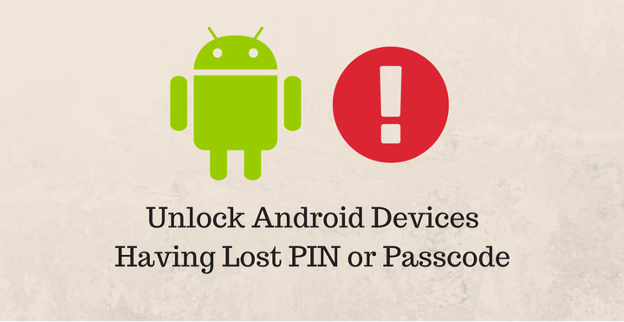Afp Printer Driver Update – UMA Technology
Afp Printer Driver Update
Introduction
Printers that support the AFP protocol (Apple Filing Protocol) require up-to-date drivers to ensure reliable printing, proper feature support, and compatibility with current operating systems. An AFP printer driver update can fix print reliability issues, improve color accuracy, add support for new paper sizes, and close security gaps that may exist in older driver packages. This guide provides a practical, platform-specific approach to updating AFP printer drivers on Windows, macOS, and Linux, covers the difference between driver updates and firmware updates, and offers troubleshooting tips to get your AFP printing environment back to optimal performance.
What is AFP and why it matters for printers
AFP originally gained traction with Apple environments for file sharing and printing through AppleTalk networks. In modern networks, AFP is often one of several print transport options a printer may support, alongside PostScript, PCL, IPP, or AirPrint. If your setup relies on AFP for printing—whether due to legacy hardware, specific driver features, or network configuration—you’ll want to keep the AFP driver and related software current to ensure compatibility with current OS versions and printer firmware.
Pre-update checklist
- Confirm the printer model and current driver version.
- Check the printer’s official support page for AFP-related drivers and recommended firmware.
- Verify your operating system version and architecture (Windows 10/11, macOS Ventura, Sonoma, etc.; 64-bit only in modern environments).
- Back up printer settings (paper size presets, print quality preferences, network port configurations) if possible.
- Have admin rights on the workstation or server where you install the driver.
- If updating firmware as well, review the printer’s firmware update notes and release notes to assess impact.
Windows: updating an AFP printer driver
1) Identify and verify compatibility
- Visit the printer manufacturer’s official support site.
- Enter the exact model number and locate the AFP-compatible driver package. Some vendors may list “AFP,” “ApplePrint,” or “legacy AFP/AppleTalk” as supported transport options.
- Confirm the driver supports your Windows version and system architecture.
2) Prepare the system
- Close all printing-related applications.
- If the printer is networked, note its IP address and current port configuration (LPD, RAW, or IPP) in case you need to reconfigure after the update.
- Temporarily disable antivirus or firewall restrictions that might block driver installation, then re-enable them after the process completes.
3) Download and install
- Download the official driver package from the vendor’s site (usually a .exe, .msi, or a standalone driver bundle).
- Run the installer as Administrator.
- Follow the on-screen prompts. If prompted to connect the printer during installation, do so via USB or ensure the network printer is reachable.
- If asked to overwrite an existing driver or keep both, choose the clean install option to avoid conflicting drivers.
4) Add or reconfigure the printer
- Open Settings > Devices > Printers & scanners (or Control Panel > Devices and Printers).
- Remove the old AFP printer driver/queue if it remains listed to avoid duplicates.
- Add the printer: choose the network printer or specify the IP address if required, select the AFP driver when prompted, or select the generic AFP-compatible driver if your vendor provides one.
- Configure printing preferences (default paper size, print quality, duplex settings, etc.).
5) Validate and test
- Print a test page and a document with typical settings (color vs. grayscale, double-sided if used, different paper sizes).
- Check advanced features (watermarks, overlays, certification, security options) to ensure they function as expected.
6) troubleshooting if issues appear
- The printer does not appear on the network: verify network connectivity, firewall, and printer’s network settings.
- Driver installation fails: review the Windows Event Viewer for driver installation errors; ensure you’re using the correct driver package for your OS version.
- Print quality problems: verify media settings, color profiles, and ensure the correct AFP driver is selected (some printers require a specific model driver rather than a generic AFP driver).
- Spooler errors or the printer showing offline: restart the Print Spooler service and re-add the printer.
macOS: updating an AFP printer driver
1) Check compatibility and sources
- Apple has moved toward modern printing stacks, but many printers still provide macOS-compatible AFP or PPD/driver packages. Check the manufacturer’s macOS driver page for AFP-specific downloads or a universal macOS driver that includes AFP support.
- Verify the driver version aligns with your macOS release (Ventura, Sonoma, etc.).
2) Prepare the system
- Save any ongoing work. It’s often best to perform a restart after driver or firmware installations.
- If you’ve previously added the AFP printer, note its queue name and any custom settings.
3) Download and install
- Download the macOS driver package (often a .dmg or .pkg).
- Open the installer and follow prompts. You may need to enter your admin password.
- If the installer requests removal of older drivers, allow it to uninstall conflicting components.
4) Add or reconfigure the printer
- Open System Settings (or System Preferences) > Printers & Scanners.
- If the AFP printer is listed, remove it before re-adding to pick up the updated driver. Use the plus (+) button to add the printer again and select the AFP-compatible driver when prompted.
- Alternatively, you can use the printer’s PPD option if the AFP driver is not explicitly listed.
5) Test printing
- Print a test page from a simple document.
- Validate a mix of documents (text-heavy, image-heavy) to confirm performance.
6) troubleshooting on macOS
- If the printer isn’t appearing, re-check network connectivity and ensure Bonjour/Multicast discovery is enabled on the network.
- If the print job is stuck in the queue, reset the printing system (Careful: this removes all printers and scanners) and add the AFP printer again.
- Security prompts about blocked software may appear; allow the vendor software to run in System Preferences > Security & Privacy.
Linux: updating an AFP printer driver
1) Determine driver availability
- Linux environments typically use CUPS for printing. Check if the printer vendor provides a Linux driver or PPD file compatible with AFP transport, or if a generic PostScript/PCL driver works for AFP-enabled devices.
- Some distributions include built-in AFP support or can use Avahi/Bonjour for discovery.
2) Install the driver or PPD
- Use your distribution’s package manager (apt for Debian/Ubuntu, dnf/yum for Fedora/RHEL, zypper for OpenSUSE) to install vendor-provided packages if available.
- If your vendor provides a PPD file, copy it to /usr/share/ppd/ or the appropriate CUPS PPD directory, and then configure the printer with CUPS (typically accessible at http://localhost:631).
3) Add the printer in CUPS
- Access CUPS Web UI, add a new printer, and select the AFP-enabled driver or the PPD you installed.
- Configure the port (e.g., AppSocket/LPD or IPP) and the correct device URI.
4) Print and verify
- Print a test page, then run typical documents to ensure color, duplex, and media settings behave as expected.
Firmware vs. driver updates
- Driver updates improve compatibility with the operating system and application-level features. Firmware updates improve the print engine, network stability, and the printer’s core functionality.
- Always review the release notes before applying either update. Firmware updates can carry risk—follow vendor instructions precisely, ensure the printer is on a stable power source, and avoid interrupting the process.
Network considerations and best practices
- Prefer a consistent transport over the network (e.g., IPP or RAW) that is known to work well in your environment. AFP can be sensitive to network changes, so locking in a stable configuration reduces rework.
- Keep a documented baseline: printer model, driver version, firmware version, port type, IP address, and queue name.
- Use a centralized management approach where possible (print server, MDM for macOS, or enterprise management tools) to push updates and monitor fleet health.
Common AFP driver issues and quick fixes
- Issue: Printer not found on the network after update
Fix: Reconfirm IP address and port type; re-add printer with a fresh queue; verify network discovery settings (Bonjour/Multicast). - Issue: Print jobs hang or stop mid-processing
Fix: Restart the spooler (Windows) or reset the printing system (macOS); ensure the correct AFP driver is selected; check for firmware compatibility. - Issue: Color or font rendering problems
Fix: Confirm you’re using the correct driver/PPD for the printer model; verify color profiles and font substitutions; re-run a test with a known-good color job. - Issue: Driver installation fails
Fix: Run the installer as Administrator on Windows; disable antivirus temporarily if it blocks installation; ensure you downloaded the correct version for your OS.
Security considerations
- Always download AFP drivers and firmware from the official vendor site or certified channels.
- Verify checksums if provided to guard against tampering.
- After installation, re-enable any security software or firewall rules that you temporarily disabled.
Automation and maintenance tips
- Schedule periodic driver and firmware checks for printers in shared networks.
- Maintain a small repository of the latest AFP driver packages for commonly used models.
- For large deployments, consider using a print management system that supports driver deployment, inventory, and consistent configuration across devices.
Frequently asked questions
- Is AFP still necessary? AFP remains relevant for legacy Apple-centric environments or specific devices that rely on it. For many modern workflows, printers are configured via PostScript/PCL, IPP, or AirPrint; AFP support might be discontinued on newer hardware, so verify with the vendor.
- Can I update iOS/macOS drivers remotely? Some vendors offer network-based or MDM-driven deployment options, but direct driver updates typically require endpoint access or an administration tool.
- Do I need to update firmware every time I update the driver? Not necessarily. Driver updates address software compatibility, while firmware updates address hardware and network performance. Review release notes to determine necessity.
Conclusion
Keeping AFP printer drivers and related firmware up to date is essential for stable, secure, and high-quality printing in environments that rely on AFP transport. By following platform-specific guidelines, validating compatibility, and performing careful testing, you can minimize downtime and ensure continued compatibility with current operating systems and applications. Whether you manage a handful of AFP printers or an enterprise fleet, a disciplined update routine—paired with proactive troubleshooting—will keep your AFP printing infrastructure resilient and productive.













